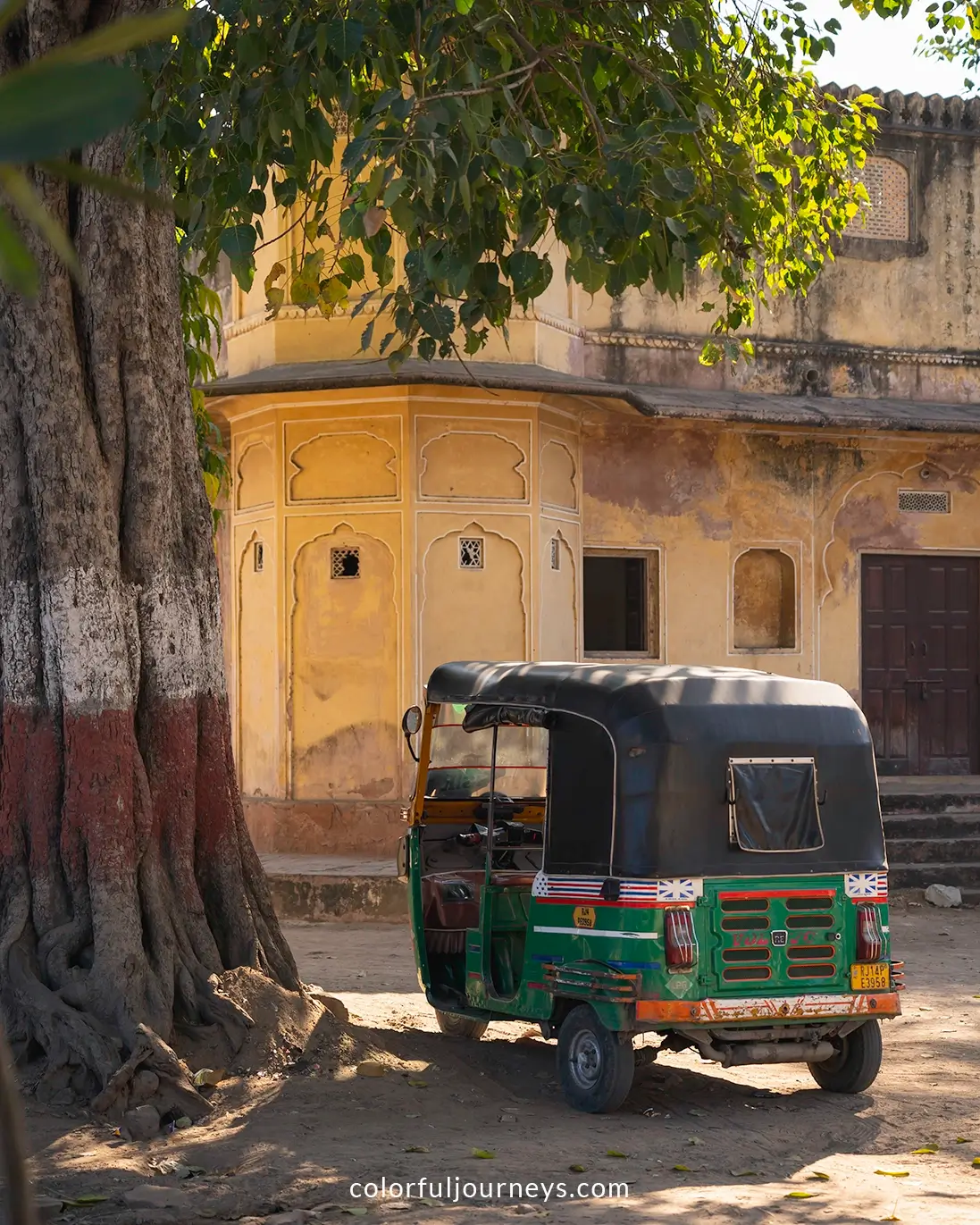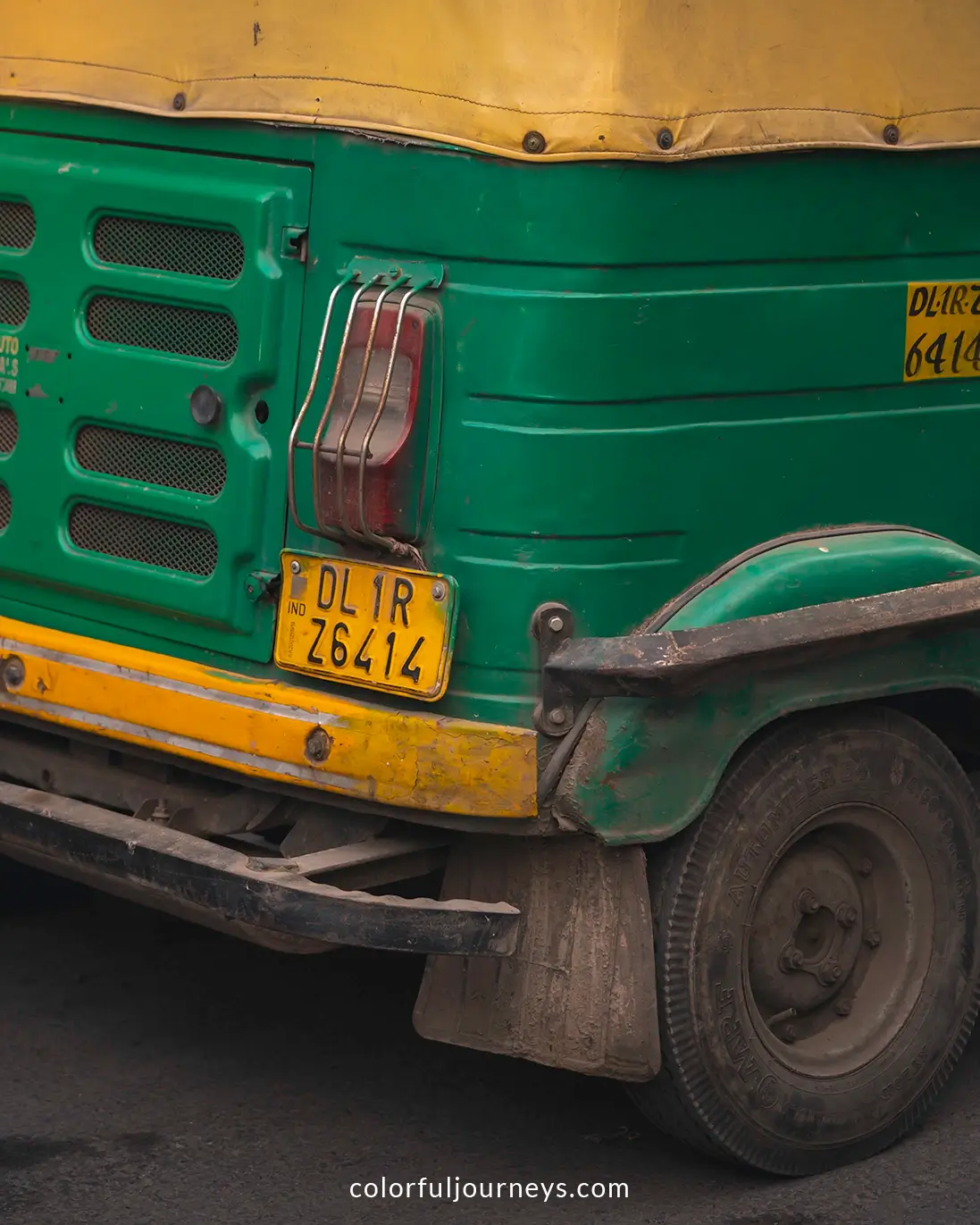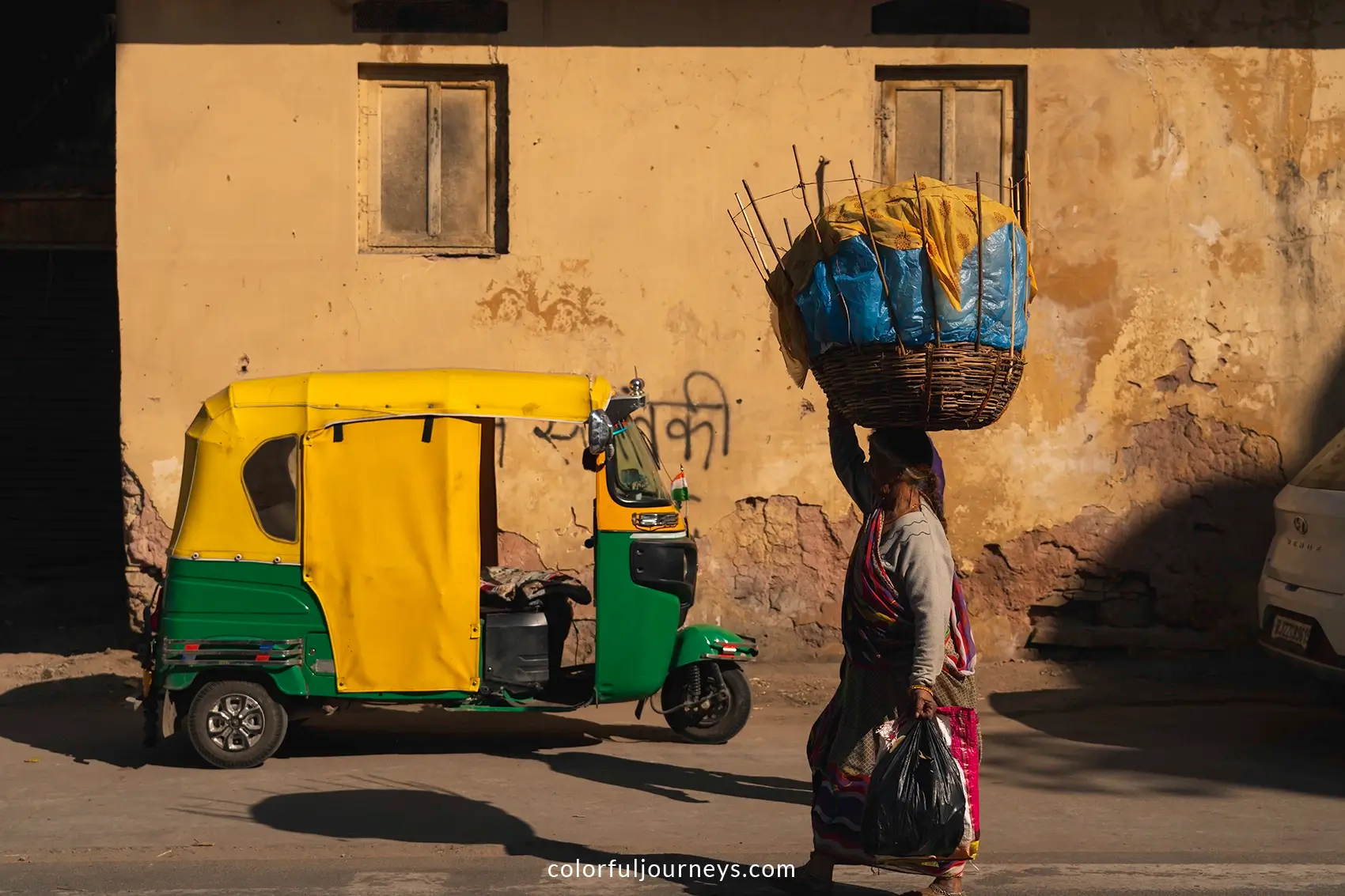

.png)
India is a vast country covering approximately 3.29 million square kilometers, stretching from the Himalayas in the north to the coastal regions in the south.
With its vast size comes a diverse range of transportation options, including planes, trains, buses, cars, and rickshaws, all connected through an extensive network.
In this transportation guide, we’re covering everything you need to know about getting around India so you can travel smoothly from A to B. Find tips on booking tickets, avoiding scams, and choosing the best transport for your trip.
{{pinterest-save}}
Plane
India has over 100 operational airports, with the busiest being Indira Gandhi International Airport (Delhi), Chhatrapati Shivaji Maharaj International Airport (Mumbai), and Chennai International Airport. These major hubs connect India domestically and internationally.
Travel Tip: Airport security lines can be slow. Be prepared to remove cameras, laptops, phones, and chargers for separate screening.
.webp)
Flying is the fastest and most convenient way to travel between major cities. The main domestic carriers—Air India, Indigo, and SpiceJet—offer frequent flights across the country.
Booking Options: Reserve tickets directly on airline websites or use 12go.asia for comparisons.
.webp)
Train
India’s rail network spans over 68,000 kilometers, with more than 7,000 stations, making train travel in India one of the most extensive in the world. Trains are a budget-friendly way to travel, connecting both major cities and remote regions.
For shorter trips, like Delhi to Agra, express trains take less than two hours and run multiple times a day, helping you avoid road traffic.

Read: How to Travel India by Train: Tickets, Classes & Tips
.webp)
For longer journeys, overnight trains let you save on accommodation by booking a berth. Comfort depends on the class you choose, with AC First Class (1A) and AC 2 Tier (2A) offering the best experience. Lower classes, like Sleeper Class (SL), are more basic and less comfortable.
Booking Options: Purchase tickets at www.irctc.co.in or via third-party sites like 12go.asia (note: extra fees apply).
.webp)
Metro
New metro lines in Delhi and Mumbai make getting around cities easier, especially during rush hour. They’re fast, affordable, and spare you the hassle of negotiating fares.
Note: Security checks, including X-ray scans, are standard, and drones are not allowed.
.webp)
Bus
Buses are the best option for reaching remote cities without train service. You’ll find everything from sleeper coaches to standard seats. Most buses pick up and drop off near city centers, saving transit time.
Booking Options:
- Buy tickets at bus stations
- Book online via RedBus for seat selection, reviews, and route comparisons
- Many accommodations can also arrange tickets
Solo Female Travelers: RedBus allows women to select seats next to other female passengers for added comfort.
.webp)
Car
For a stress-free way to explore, hire a private driver. It’s ideal for groups, lets you travel at your own pace, and avoids the noise and chaos of city traffic.
A private car is especially useful for intercity travel, as you can make stops along the way—something buses and trains don’t allow.
Explore India with confidence. Protect your trip with travel insurance at Heymondo and save 5% today—exclusive for our readers!
.webp)
For example, instead of taking a train from Agra to Jaipur, we hired a driver and stopped at Fatehpur Sikri. The train would have taken around four hours (about the same as driving), but with a private car, we fit in an extra stop without backtracking.
Multi-day car hires are popular for routes like the Golden Triangle (Delhi–Agra–Jaipur) and throughout Rajasthan.
Booking Options: Arrange through your accommodation or book via Viator.
.webp)
Ridesharing Apps
Ridesharing apps like Uber and Ola are widely available in major cities like Delhi and Mumbai. They offer a hassle-free way to get around without negotiating fares.
Things to Know:
- You’ll need an Indian phone number to register, as drivers often call before pickup.
- Provide the driver with a code to start the ride.
- While digital payment is an option, cash is commonly accepted.
.webp)
Rickshaw
Rickshaws are India’s classic ride—fast, chaotic, and always an adventure. These three-wheelers come in three types: cycle, electric, and auto rickshaws. They’re affordable, convenient, and often the only way to navigate the maze of narrow streets.
Just be ready to bargain—fares aren’t fixed, and a little haggling is expected. That said, keep things in perspective—a difference of 50 cents might not mean much to you, but for the driver, it can go a long way. Carry small bills, as drivers rarely have change (or so they claim).
On our recent trip through Delhi and Rajasthan, auto rickshaw rides averaged ₹200 ($2) for 10–15 minutes.
.webp)
Negotiation Tips:
- Ask your accommodation - They can tell you what a local would pay—expect to pay about double as a tourist.
- Check Uber fares - This gives you a rough idea before you start bargaining.
- Settle the price first - Always agree on the fare before hopping in.
Beware of Unwanted Stops
If you’re coming from a touristy spot, some drivers might suggest a stop at a shop where they earn a commission. A polite but firm “no” usually does the trick. If they persist, just walk away—another ride is always nearby.
Pro Tip: Some drivers offer to wait while you sightsee, without extra charge. This can be handy in quieter areas where finding another ride isn’t as easy.
On Foot
Walking in India can be overwhelming, but it’s also one of the best ways to take in the country’s energy. Wander through narrow alleyways, dodge rickshaws, and stumble upon hidden markets you’d otherwise miss.
Just watch your step—you’ll be sidestepping everything from trash to piles of dung.
.webp)
That’s how you get around India!
Now that you know your way around, make sure you have the right visa and entry documents. Check out our guide to India’s visa requirements for application details, costs, and processing times.
If you have any questions about transportation in India, leave a comment below.
Some links in this India Travel Guide may be affiliate links.
This means that if you make a purchase after clicking on one of our links, we will receive a small commission at no extra cost to you. Please know that by doing so, you are supporting Colorful Journeys in continuing to provide free high quality content to help you in your travels!
.webp)
.webp)



.webp)
.webp)
.webp)
.webp)
.webp)